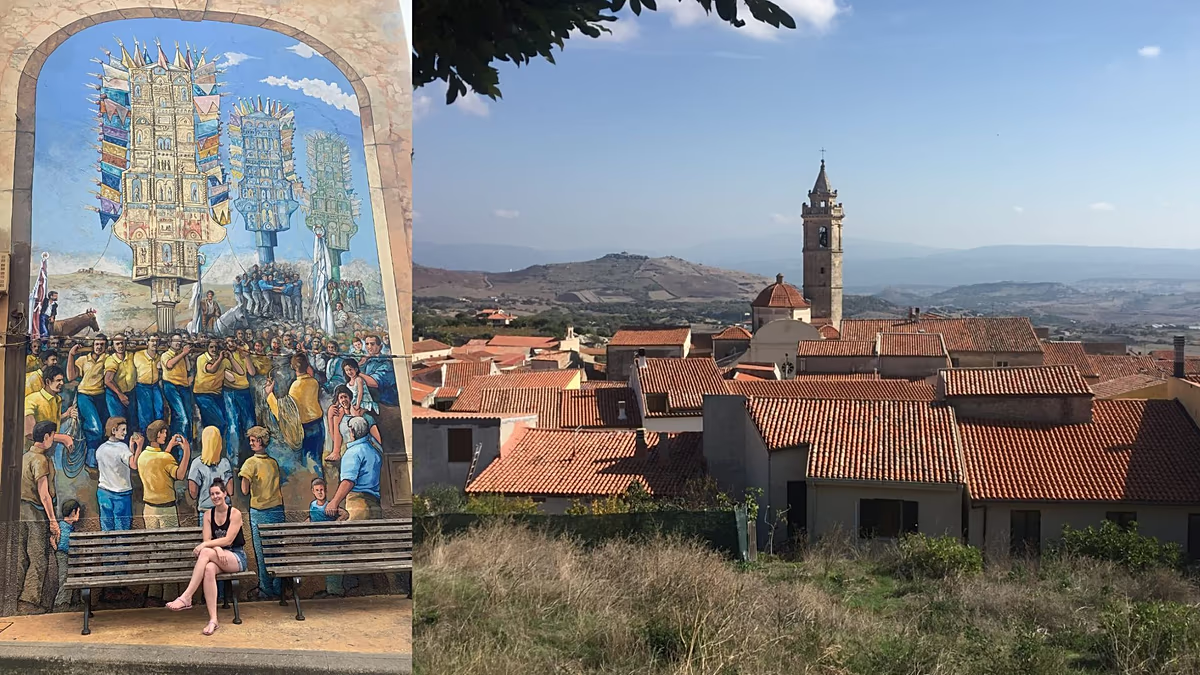Finding Home in Sardinia: One Woman’s Journey to Rural Italian Life
In March 2024, Bianca Fontana boarded a plane from Australia to Sardinia for what was intended to be a three-week vacation. Instead, those 21 days became the foundation for a complete life transformation. Far from the bustling cities and beaches that draw most tourists to this Mediterranean island, Fontana was captivated by Sardinia’s rural interior – a region of profound beauty facing a critical demographic crisis. What began as a holiday concluded with her purchasing a home, navigating Italian bureaucracy, and laying the groundwork for an international relocation to a village of just 2,500 residents. Her story illustrates the growing movement of foreigners seeking simpler lives in Italy’s depopulating rural communities, where ancient stone houses stand empty and local governments offer compelling incentives to newcomers willing to breathe new life into these struggling areas.
“Honestly, the biggest challenge was just saying yes, making the decision itself – because it can be a scary one,” Fontana reflects on her life-changing move. Despite having Italian ancestry, the prospect of putting down roots represented a significant departure from her nomadic lifestyle. “I had not foreseen home ownership in my life, and I’ve lived a life abroad and full of travel, never staying longer than five years in one place, so the thought of committing to something was the scariest part.” Once that psychological hurdle was cleared, the practical aspects fell into place with surprising ease. During her brief visit, she selected a property and granted power of attorney to a local surveyor. Weeks later, back in Australia, she completed the transaction with a simple bank transfer. When she returned to Sardinia, her lawyer greeted her with the keys to her new home – a tangible symbol of her commitment to this remote Italian community.
Sardinia’s interior faces a critical demographic challenge that has prompted innovative solutions from local authorities. While coastal cities like Cagliari, Sassari, and Alghero maintain relatively stable populations, rural villages are witnessing a steady exodus as younger residents depart for urban opportunities. The island’s total population has declined from 1.64 million three decades ago to approximately 1.57 million today, with rural areas bearing the brunt of this decrease. In response, municipalities such as Ollolai and Nulvi launched attention-grabbing schemes offering abandoned houses for as little as €1 to attract new residents. Building on these local initiatives, regional authorities have implemented island-wide anti-depopulation measures providing financial assistance of up to €15,000 for individuals moving to villages with fewer than 3,000 residents. The funding can be used to purchase or renovate homes, with the stipulation that recipients remain resident for at least five years – a commitment designed to ensure meaningful community integration rather than speculative property acquisition.
Fontana’s experience highlights both the opportunities and challenges inherent in such a move. She purchased her house for €30,000 – a fraction of comparable property prices in Australia – but discovered significant renovation needs, including a damaged roof and interior water damage. Taking advantage of the government renovation incentive scheme helped offset these costs, though navigating the bureaucratic process required professional assistance. “The approval came in maybe six months [after submitting it] and then I was notified that the money was ready around six months after that, so it took a little over a year to receive the money,” she explains. Her renovation plans, including revealing original stone walls, adding bathrooms, installing a kitchen and heating system, carry an estimated price tag of €100,000 – a substantial investment, but still considerably more affordable than housing in her native Australia. This financial accessibility represents a powerful draw for many international transplants seeking to escape prohibitive real estate markets in their home countries.
Sardinia’s demographic initiatives extend beyond housing to address the island’s alarmingly low birth rate – just 0.91 children per woman, the lowest in Italy and far below the 2.1 rate needed for population stability. The comprehensive anti-depopulation package includes monthly subsidies of €600 for a first child and €400 for each subsequent child until age five, directly incentivizing family formation. Equally important for sustainable community revitalization are economic development measures, including grants of up to €20,000 for individuals starting businesses that create local employment opportunities in small towns. These multifaceted approaches recognize that true community revival requires not just new residents but also economic vitality and demographic renewal. While financial incentives attract initial interest, the long-term sustainability of these rural communities depends on creating environments where residents of all ages can thrive economically and socially.
Beyond financial calculations, many foreign transplants to rural Sardinia are motivated by a profound yearning for a different way of living. “I think the state of richer countries is no longer appealing to many,” Fontana observes. “People want to escape the rat race, find a quieter, more nature-filled way of life.” The growing dissatisfaction with the pace, pressure, and disconnection of modern urban existence drives many to seek alternatives that offer authentic community connections, natural beauty, and a more measured rhythm of daily life. The rise of remote work possibilities and digital nomad visas has removed previous barriers to such lifestyle transformations, making rural relocation increasingly viable for professionals who can maintain their careers from anywhere with reliable internet access. While Fontana notes she has no plans to have children herself, she contributes to the revitalization effort by documenting her experience online and providing guidance to others considering similar moves. “Sharing my journey can be just as effective to bring new blood to this place,” she explains, recognizing that each newcomer represents not just a statistical addition to the population but a unique contribution to the evolving story of Sardinia’s rural renaissance – a movement that balances preservation of cultural heritage with the fresh perspectives and energy that international transplants bring to these ancient communities.


